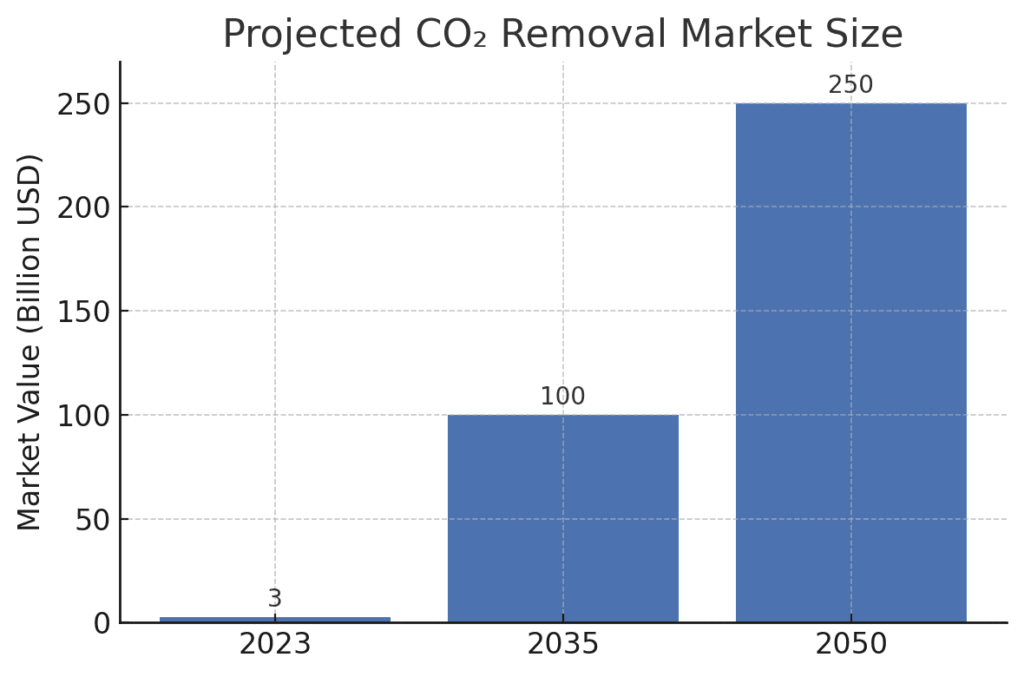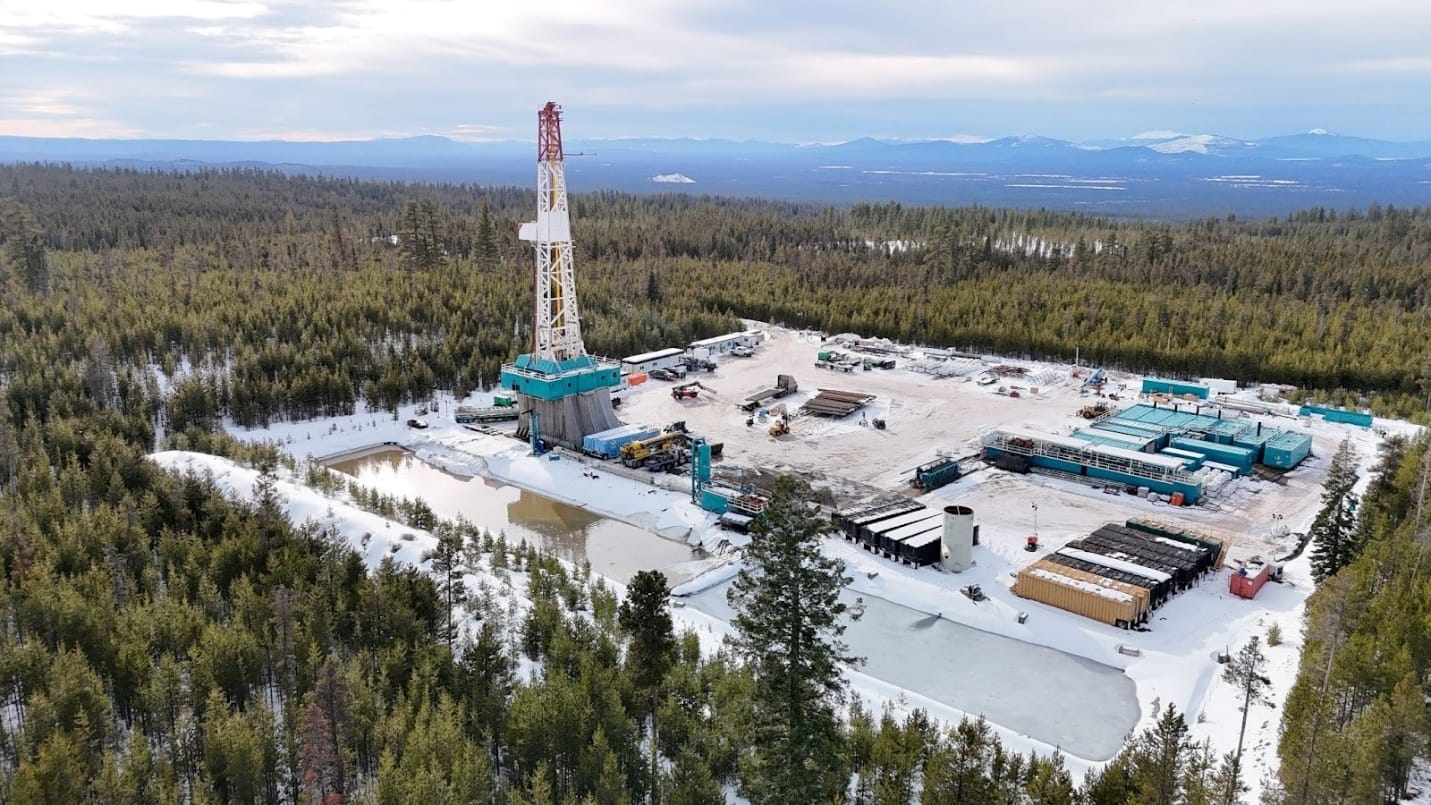Halifax Harbour, Nova Scotia – On a crisp autumn morning, a team of scientists and engineers quietly pumped a milky “antacid” slurry into the sea. The mixture of alkaline mineral – essentially an ocean-safe antacid – diffused into the harbor waters, neutralizing a bit of acidity and sparking a chemical drawdown of carbon dioxide from the air. This unconventional climate experiment, led by Canadian startup Planetary Technologies, is part of a bold new wave of ocean-based carbon removal trials. As the world scrambles to slow global warming, efforts like this illustrate both the urgency and the uncertainty of turning our oceans into allies against climate change.
Today, climate experts agree that slashing emissions is not enough; actively removing CO₂ from the atmosphere has become “critical” for achieving net-zero targets by mid-century. The 2020s have seen record-breaking heat and intensifying floods, fires, and storms – stark reminders that even drastic emission cuts leave behind “legacy” CO₂ still warming the planet. The latest science suggests we likely need to extract billions of tons of CO₂ per year by 2050 to avert the worst outcomes. In response, a new generation of startups and scientists is racing to enhance the ocean’s natural carbon-sinking abilities, from mineral “antacids” to kelp farms and electrochemical reactors. Ocean-based carbon capture, once fringe, is now being pursued with a mix of hope, urgency, and caution.
Table of Contents
TogglePlanetary Technologies’ Ocean Antacid Trials in Nova Scotia
Planetary Technologies – formerly Planetary Hydrogen – has emerged as a pioneer in this field, blending industrial chemistry with marine science. In late 2023, Planetary conducted a closely-watched two-month trial in Halifax Harbour, Nova Scotia, adding controlled doses of alkalinity (in the form of magnesium hydroxide powder) into the cooling water outflow of a power station. The goal: permanently lock away CO₂ by increasing the water’s alkalinity, which causes seawater to absorb more carbon dioxide and convert it into stable bicarbonate. As a co-benefit, this also raises the local pH, countering ocean acidification that threatens shellfish and corals.
Early results from the Halifax pilot have been encouraging. By gradually ramping up dosing, Planetary achieved a peak alkalinity addition rate equivalent to 12,000 tons of CO₂ removal per year (on a gross basis). Constant monitoring showed a measurable rise in pH in the plume area without harming marine life: local plankton and shellfish experienced pH swings smaller than what they routinely tolerate from natural tides. “Initial results indicate that additions successfully increased the pH… and that the local marine life is adapted to much larger changes in pH than our trial induced,” Planetary’s scientists reported. Equally important, extensive sampling by independent researchers at Dalhousie University found no unanticipated ecological changes due to the treatment. In total, Planetary captured 138 metric tons of CO₂ during this pilot, and in November delivered 138 certified carbon credits – the world’s first from Ocean Alkalinity Enhancement (OAE) – to its early corporate backers, Shopify and Stripe.
These 138 tons are a drop in the bucket of global emissions, but they represent a milestone for marine carbon removal. “The early results are really encouraging,” says Dr. Will Burt, Planetary’s Chief Ocean Scientist. “We’ve got a long way to go… but this really is a story about hope”. Buoyed by Nova Scotia’s success, Planetary is scaling up: the company plans a 2024 follow-up trial in Halifax with more rigorous monitoring (including CO₂ flux chambers and eDNA tests to track marine organisms), and it’s developing new OAE pilot sites at a wastewater plant in Virginia and in Vancouver, British Columbia. “We have to act with safety and integrity, but we also have to act fast,” Burt emphasizes. It’s a delicate balance – moving quickly to address the climate crisis, yet cautiously enough to earn the trust of regulators and coastal communities.
Not everyone is immediately convinced. When Planetary proposed a similar trial in Cornwall, UK, local residents pushed back hard – “Keep our sea chemical-free!” read protest signs along St. Ives Bay in April 2024. Some critics argued the company hadn’t done its homework on local ecology. “They had no idea about what animals or plants… live in the bay,” said one Cornwall marine biologist, who felt the plan was too much, too soon. Planetary ultimately paused that UK experiment amid community concerns. The contrast is telling: in Nova Scotia, Planetary spent years working with local scientists and the utility (Nova Scotia Power) before pouring a drop in the ocean; in other locales, a slower, consultative approach is needed to allay fears of “geoengineering” gone wrong.

A Sea of Startups: New Players in Ocean Carbon Removal
Planetary Technologies is not alone in its mission to harness the ocean for climate repair. Over the past few years, a fleet of climate startups has set sail, each navigating a different technological route—some drawing inspiration from biology, others betting on bold feats of chemistry and engineering. Together, these ventures represent a new frontier in carbon removal, one defined by ambition, complexity, and the need for rigorous oversight.
In the biological lane, the now-defunct Running Tide once led the charge. The Maine-based company experimented with sinking massive quantities of kelp and limestone-coated wood chips into the deep ocean, banking on natural decomposition and alkalinity effects to draw down CO₂. Between 2017 and 2023, Running Tide removed approximately 25,000 metric tons of carbon dioxide and delivered over 21,000 certified carbon credits—more than any other marine-based effort to date. Its downfall in mid-2024, however, was a sobering lesson: despite promising early results and high-profile buyers like Microsoft and Shopify, the company was unable to withstand a sharp contraction in the voluntary carbon market. Running Tide shuttered operations, citing investor fatigue and a market “shrinking faster than we could adapt.”
In contrast, California-based Ebb Carbon is betting on a more precise, chemistry-driven approach. The startup’s electrochemical system removes acid (dissolved CO₂) from seawater, thereby raising its pH and enhancing its ability to draw in carbon from the air. What sets Ebb apart is its landmark achievement in regulatory compliance: in 2024, it became the first company to secure a U.S. Environmental Protection Agency (EPA) permit for an ocean CO₂ removal pilot under the Clean Water Act. Its “Project Macoma” in Port Angeles, Washington, is now underway, aiming to capture carbon directly from coastal waters over the next two years.
Another contender in electrochemical carbon removal is Equatic—formerly SeaChange—a spinoff from UCLA that uses a similar process to split seawater, isolate carbon, and simultaneously generate clean hydrogen fuel. Equatic’s dual-output model has attracted serious attention: in late 2023, aerospace giant Boeing signed a five-year agreement to purchase 62,000 tons of CO₂ removal and over 2,000 tons of hydrogen. With demonstration facilities already running in Los Angeles and Singapore, Equatic is positioning itself as a scalable solution provider for both climate and clean energy needs.
Meanwhile, Project Vesta is returning to Earth’s geological roots. The U.S.-based initiative is pioneering coastal enhanced weathering—spreading finely ground olivine sand on beaches and shallow seafloors, where wave action speeds up the rock’s natural carbon-absorbing reaction. After small-scale tests in the Caribbean, Vesta’s 2024 deployment of 8,000 tons of olivine off the coast of North Carolina marked a major milestone. Still, the project has had to tread carefully: concerns over ecological disruption, especially in turtle habitats, forced a scale-down during permitting. Ongoing research is now focused on monitoring sand dissolution rates, marine life impacts, and CO₂ uptake.
Then there’s Captura, which takes a more direct approach. Developed at Caltech and backed by oil majors like Equinor and Aramco, Captura draws seawater into a proprietary electrodialysis system, separates out pure CO₂ gas for storage or reuse, and returns treated water to the ocean—now primed to absorb more carbon. Think of it as direct air capture, but through the sea. The company has already demonstrated its technology in Newport Beach, California, and is now scaling toward offshore systems designed to process tons of CO₂ per day.
Together, these ventures illustrate a core truth: there is no one-size-fits-all solution when it comes to ocean carbon removal. Each method—whether bio-based, chemical, or electrochemical—offers distinct benefits, challenges, and unknowns. What unites them is the belief that the ocean, long overlooked as a passive carbon sink, can become an active agent in climate recovery. But as these early experiments show, success will depend not just on bold science and engineering, but on building trust with regulators, communities, and investors—because scaling these solutions to climate-relevant levels means navigating far more than tides and chemistry.
How Effective Is Ocean Carbon Capture? – Science and Uncertainties
Ocean-based carbon removal taps into powerful natural processes – but does it work at scale, and is it safe? Thus far, small-scale trials and models give reason for cautious optimism: adding alkalinity does increase ocean carbon uptake and help counter acidification, and growing seaweed or shellfish can indeed sequester carbon (at least temporarily). A 2022 National Academies analysis estimated that methods like ocean alkalinity enhancement (OAE) could potentially remove on the order of 0.1 to 1 gigaton of CO₂ per year in the future, a meaningful chunk of global needs. But the devil is in the details – and in the deep blue sea, details abound.
One major question is permanence: once carbon is transferred into ocean forms, how long will it stay put? In the case of Planetary’s dissolved bicarbonate, the CO₂ is locked away for thousands of years unless geological processes later release it. In more biological schemes, however, the carbon can be less secure. The now-defunct Running Tide, for instance, claimed its sunken biomass might keep carbon out of the air for 50 to 3,000 years, but that depends on where it ends up. If wood or kelp decays in shallow waters, much of the CO₂ could resurface within decades. Only if it reaches great depths or is buried in sediments would centuries-long storage be achieved – something that’s “no easy feat to ensure,” as one oceanographer noted. Verifying carbon permanence in the ocean is inherently tricky, requiring follow-up monitoring of where carbon goes (deep sea, seafloor, food web, etc.). This complicates accounting for carbon credits and necessitates conservative claims to avoid over-crediting removal that might not last.
Another concern is ecological risk. The ocean’s chemistry and biology are finely tuned; even well-intentioned interventions can have side effects. OAE advocates often describe added alkalinity as an “antacid for the sea,” which in moderate doses can heal local waters by countering acidification. Yet, push the dose too far or too fast, and you might overshoot optimal pH or cause minerals to precipitate out. Lab experiments have shown that only at extreme alkalinity increases do organisms suffer (e.g. plankton struggling when water turns too caustic), but those findings help define safe limits. Scaling up from a beaker to a bay or an open-ocean region introduces uncertainties: how will currents spread the alkalinity? Will added minerals interact with trace nutrients or plankton blooms in unintended ways? And might there be cascading effects in the food web?
Early field trials are reassuring on some of these points. In Planetary’s Halifax trial, for example, marine life seemed unaffected within the area of dilution. Likewise, when Project Vesta’s team scattered that olivine sand in North Carolina, they did so under strict ecological monitoring – regulators only gave the green light after the project included a thorough plan to track impacts on water chemistry, seafloor life, and even deep-water species. The EPA’s initial reviews of a separate OAE experiment (led by scientists at Woods Hole Oceanographic) concluded the idea’s “scientific merit outweighs the environmental risks”, finding no expected “unacceptable impacts” on water quality or fisheries. This federal backing suggests confidence that small-scale tests are safe. However, local fishermen remain wary. “What will happen to the lobster and flounder eggs… if they are suddenly doused with the chemical?” one lobsterman demanded at a public meeting, voicing fears of unknown consequences. Even with permits and studies, ocean interventions face a trust gap with many coastal communities who depend on the sea and recall past ecological missteps.
Ocean fertilization – a related carbon removal tactic – offers a cautionary tale. In 2012, an entrepreneur infamously dumped 100 tons of iron sulfate off Canada’s west coast (without full approval) to spur a plankton bloom, aiming to sink carbon and boost salmon. The result was international condemnation and a de-facto moratorium on such unregulated geoengineering. The incident “set progress back by a decade,” scientists say, chilling research on ocean CDR due to fears of rogue actors. Today’s ocean carbon removal startups are acutely aware of this legacy. They emphasize transparency, community engagement, and independent science. Many have even called for an industry “code of conduct” to ensure responsible research and prevent a few bad actors from spoiling public trust. In short, the consensus is that we must learn fast but act carefully: push forward with larger trials – because climate change isn’t waiting – yet rigorously study impacts and be ready to hit the brakes if needed.

Policy and Regulation: Navigating Uncharted Waters
The rapid emergence of ocean-based carbon removal has regulators playing catch-up. No country yet has comprehensive rules specifically for marine carbon dioxide removal (mCDR), but that’s starting to change in bits and pieces. “In Canada and internationally, there are no specific regulations that deal with mCDR,” notes Neil Craik, a law professor who studies climate governance. An international treaty, the London Protocol, was amended in 2013 to restrict marine geoengineering like ocean fertilization, but it isn’t fully ratified or enforceable. As a result, most ocean CDR projects today proceed under case-by-case permits or within existing environmental laws – essentially operating in a gray area that treats them as scientific research.
In the United States, ocean carbon removal trials fall under the purview of the EPA and NOAA (National Oceanic and Atmospheric Administration). The EPA has signaled it can issue research permits for mCDR under the Ocean Dumping Act (Marine Protection, Research, and Sanctuaries Act), as long as projects meet safety criteria. This was tested recently: in 2023, a team at Woods Hole obtained EPA research permits for their small-scale NaOH (alkali) release experiment near Massachusetts, which federal scientists reviewed and tentatively endorsed. Likewise, startup Ebb Carbon’s pilot in Washington state secured a National Pollutant Discharge Elimination System (NPDES) permit – essentially a wastewater permit – to return treated water to the ocean. These are landmark firsts, suggesting that regulators are willing to allow well-designed experiments. The Biden Administration’s 2023 Ocean Climate Action Plan even named Ocean CDR as a priority, and NOAA has directed funds (over $24 million in 2023) to research the impacts and efficacy of approaches like OAE and seaweed farming.
North of the border in Canada, where Planetary operates, the federal government is moving more slowly. Canadian officials have acknowledged the need for a regulatory framework and say they are working on one, but for now projects are evaluated under general environmental statutes. Planetary’s Nova Scotia trial, for instance, proceeded after thorough vetting by provincial and federal scientists, and the company voluntarily submitted data to regulators throughout the process to demonstrate compliance with safety limits. Still, without formal mCDR regulations, there’s a sense of “learning by doing”. Canada’s Natural Resources department indicated it’s aiming to implement relevant international agreements (like eventually the London Protocol amendment) and “ensure safe implementation” of these technologies. Until then, each new proposal – be it olivine on a beach or antacid in a bay – faces a patchwork of approvals and sometimes, as in the NC and Cornwall cases, public opposition that can sway the outcome.
That public skepticism is an important factor shaping policy. Many fishing communities and environmental groups remain leery of large-scale experiments in their waters, given the ocean’s history of being treated as a dumping ground. In Maine, for example, state officials and fishermen are watching ocean CDR developments with cautious interest. U.S. Congresswoman Chellie Pingree of Maine has advocated for more research funding and monitoring (Maine even set up a state ocean acidification council), but also stresses that cutting emissions should come first. Policymakers broadly echo that sentiment: carbon removal “is not a substitute for reducing emissions and cannot be an excuse to delay action”. As one climate researcher put it, “We need to reduce emissions urgently, drastically… [and] any removal of CO₂ is much more difficult and costly than avoiding emissions to begin with.”. This perspective is fueling calls for guardrails: governments integrating removals into climate plans, but with transparency, standards, and community consent. For instance, the UK is considering including verified carbon removals in its Emissions Trading Scheme to stimulate the market, while also pushing for solid accounting rules.
In summary, regulation is evolving, slowly catching up to innovation. The current landscape rewards those who engage regulators early and operate like open science projects. The flipside is that any mishap or perceived secrecy could prompt a regulatory crackdown. As Kate Moran of Ocean Networks Canada observes, “people understand a process has to be followed, but it can be accelerated… because of the urgency”. Getting that process right – balancing urgency vs. precaution – will determine how far and how fast ocean-based CDR can scale under the watchful eyes of the law.
Markets and Outlook: Scaling to Meaningful Impact
Beyond scientific and legal hurdles, ocean carbon removal ventures face a more down-to-earth challenge: economics. Thus far, nearly all have operated at pilot scale, funded by a mix of venture capital, research grants, and small but notable purchases of carbon credits by corporate climate leaders. The voluntary carbon market for high-quality removal credits is in its infancy – and volatile. In 2023, total sales of CO₂ removal credits (across all methods) were estimated around $2.7 billion, a blip compared to the trillions needed for climate stabilization. Analyses by consultancies like McKinsey and Oliver Wyman suggest this market could grow exponentially, reaching $100 billion per year by ~2030-2035 and perhaps $250 billion by 2050 – effectively a trillion-dollar industry by mid-century, as Planetary’s CEO predicts. But getting from here to there is far from guaranteed.

One stark lesson came in mid-2024, when Running Tide – once a carbon removal darling with major backers – abruptly shut down operations. The Maine-based startup had raised over $50 million and boasted corporate customers like Microsoft and Shopify. It had even delivered 21,000 carbon credits to buyers, more than any ocean-focused project to date. Yet, according to CEO Marty Odlin, the business became untenable when the broader voluntary carbon market “shrank” and credit prices plummeted by 80% over 20 months. “We were building for a growing market and all of a sudden it was shrinking. There isn’t enough demand right now,” Odlin lamented. With high interest rates and waning investor appetite in 2023–24, Running Tide couldn’t secure new financing and chose to wind down before going bankrupt. The shutdown sent a chill through the nascent industry: if one of the leading players couldn’t survive the “valley of death” between pilot and scale, what would it take for others to thrive?
Yet, there are signs that demand for trusted removals is rising, albeit slowly. Tech companies like Stripe, Microsoft, Shopify, and Alphabet have formed advance market commitment coalitions (e.g. Stripe’s Frontier fund) to purchase high-cost carbon removal tons and help new projects gain footing. Indeed, Planetary’s first 138 credits were sold directly to Stripe and Shopify as part of such commitments. More big-name buyers are stepping up: in 2023 Boeing agreed to a five-year offtake from Equatic for tens of thousands of tons, essentially betting early on a technology not yet at industrial scale. Meanwhile, governments are starting to put money on the table. The U.S. Department of Energy, flush with funds from 2022’s Inflation Reduction Act, is primarily investing in direct air capture but has also started to eye ocean solutions. NOAA’s dedicated research grants for marine CDR (17 projects funded in 2023) will deepen the scientific foundation, which in turn can bolster investor confidence.
Cost per ton is a crucial piece of the puzzle. Right now, ocean CDR approaches are mostly expensive. Planetary hasn’t disclosed its per-ton costs publicly, but being a XPRIZE winner implies a pathway to <$100/ton in the future. Running Tide’s kelp/wood approach was initially touted as potentially low-cost (tens of dollars per ton) due to using cheap waste biomass and natural ocean sinking, but the true costs including monitoring and verification made credits much pricier. Electrochemical methods like Ebb Carbon and Equatic promise eventual scale and automation, but they involve capital-intensive equipment. Equatic’s deal with Boeing, for example, has been reported at roughly $250 per ton for CO₂ removed – a bargain compared to direct air capture today, yet still far above the single-digit prices of avoided-emission offsets. Over time, if these technologies can piggyback on existing infrastructure (e.g. using coastal facilities like power plants or desalination outfalls to deploy OAE units), they could leverage economies of scale. Co-products like hydrogen (in Planetary and Equatic’s case) or valuable minerals from seawater could offset costs further. The long-term vision is to bring ocean CDR costs down into the tens of dollars per ton, competitive with other climate solutions – but that will likely require massive scaling, innovation, and cheap clean energy.
As of 2025, the entire ocean-C DR field is at a pivot point. Hundreds of millions of dollars have been poured into R&D and early startups, but tangible climate impact is still very small (on the order of a few thousand tons removed cumulatively). The coming decade will determine whether these approaches can graduate from pilot projects to bona fide climate infrastructure. That means answering outstanding scientific questions, proving reliable monitoring (so buyers and regulators trust the carbon accounting), securing public buy-in, and driving costs down through iteration and scale.
In a broader sense, ocean carbon removal highlights a paradox of the climate fight: on one hand, it feels like “tinkering with one of the planet’s most complex systems”, a risky proposition when that system (the ocean) is already stressed. On the other hand, the status quo is itself dangerous – ongoing CO₂ emissions are acidifying oceans, warming waters, killing corals, shifting fisheries. “Climate change is doing [the tinkering] too, and those side effects are manifold,” as a Canadian journalist aptly noted. In that light, carefully intervening in the ocean to remove CO₂ might be far safer than the alternative of doing nothing. As Dr. David Ho, an oceanography professor, put it, “The question is, what happens when you scale it up to billions of tons every year? …That’s still to be determined. But the alternative to never trying is unabated climate change.”.
This much is clear: the planet is running out of time. Every tool – emissions cuts, land removals, and ocean removals – will likely be needed to meet global climate goals. Ocean-based carbon capture offers a tantalizing new tool, one that leverages Earth’s blue beating heart to help correct the atmospheric imbalance. It is no silver bullet, and it carries its own challenges and risks. But with smart science, sensible policy, and sustained investment, it could mature into a critical component of our climate solution portfolio. The coming years will reveal whether we can truly turn the tide in our favor – using the oceans not as a dumping ground for carbon, but as a well-managed reservoir to draw down and safely store humanity’s excess CO₂.
As Planetary’s Will Burt reflects from his seaside test site, “We cannot study this solution at the same rate that we’ve been studying the problems… there’s not enough time.” The oceans have been passively buffering our emissions for ages; now, with eyes wide open, we are asking them to do a bit more – to help actively heal the climate. It’s a bold ask, and one we must approach with both humility and determination. The world’s largest carbon sink may well play a starring role in climate restoration, but only if we earn the ocean’s trust – and learn to work with it responsibly – in the critical decade ahead.












